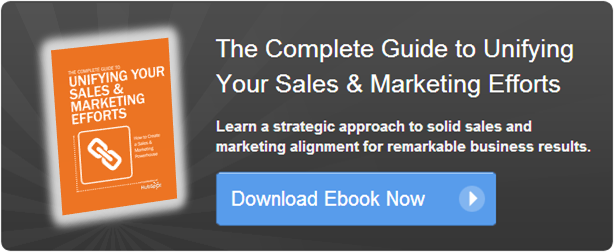 This is a guest blog post by Mike Gospe, author of
The Marketing High Ground
, now available on Amazon. He is also a speaker for our
Lead Generation Quick-Start Series
.
This is a guest blog post by Mike Gospe, author of
The Marketing High Ground
, now available on Amazon. He is also a speaker for our
Lead Generation Quick-Start Series
.

We’re approaching the mid-point of 2011, and it’s time to take stock. How well are your lead gen programs performing? Be honest.
When lead generation programs fail, they do so mainly because the messages communicated are irrelevant or ill-timed for the target audience. Our target customers are bombarded with thousands of messages every day. Unfortunately, we (as a society) have become so used to information overload, it's become the white noise of the marketplace. As a result, the knee-jerk reaction from companies is the "ready, fire" execution of promotional offers. It's easy for marketers to fall into the trap of believing that volume replaces the need to "aim."
Here's the good news: it's easier than you think to get out of this cycle of noise-producing marketing that feeds the black hole of spam filters everywhere. All it takes is a small bit of back-to-basics marketing discipline with three steps designed to help you understand the buyer. After all, in our competitive business climate, whoever understands the buyer best, wins. Hands down.
Step 1: The Persona
A persona is a fictional representation of a set of real people who share similar traits or experiences. A client I was working with was interested in reaching IT leaders of the Global 3000 companies. That's a fairly wide range of folks. We needed more specific information in order to construct an effective integrated marketing plan. To help narrow the field, we built the persona of our ideal prospect, focusing on who they are, where they work, and what characteristics made them a good target for us with respect to our products and services. By the end of our brainstorming session, we zeroed in on this label to summarize them: “the skeptical futurist.” Key to each persona is more than just basic demographics. We also want to include information about what they think and how they make purchase decisions. Unsure where to start? Ask a sales rep about their latest win.
Step 2: The Positioning Statement
With a keen sketch of our target persona in mind, we now need a crisp positioning statement to focus our attention on the values and benefits customers care about and how our product can uniquely deliver them. This tool identifies the target audience (persona), names the product, its category, primary benefit meaningful to the persona, and relevant points of differentiation compared to the most likely competitive alternative. Intended for internal use only, this tool is instrumental in helping marketers stay true to the values and benefits that matter most to customers. While the positioning statement is not the message to the prospect or customer, customer-friendly messaging can be derived from it easily. The most difficult part of the positioning statement exercise is that it forces marketers to make sacrifices. Intuitively, we know we can’t be “all things to all people.” Yet, that’s what most companies end up trying to promote. That misstep only adds to the noise and confusion in the marketplace. The positioning statement exercise is a forcing function that will lead marketers to produce clearer, tighter, and more consistent messages that prospects will hear and understand.
Step 3: The Message Box
Marketers must stop yelling at prospects. Successful marketing today is less about direct selling and more about story telling. And people pay attention when the story is about them. The Message Box is the best technique I know to craft a concise "elevator pitch" using language the persona will understand. Imagine a blank sheet of paper with a box in the middle. Put the name of your product in the box, and put the name of your persona in the upper left corner of the page. Surrounding the box are places for four messages: engagement (top), solution criteria (right), product reinforcement (bottom), and value (left). Each message leads into the next, transgressing in a clockwise fashion.
- The "engagement message" is the hook, usually expressed as a problem or opportunity designed to literally engage the target audience in a dialogue.
- The "solution criteria message" suggests criteria that must be met to address the problem or opportunity shown in the engagement message, regardless of the vendor selected.
- The "product reinforcement message" is when we introduce the product by name. Whereas the engagement and solution messages are about the buyer, reinforcement is about our product and how it is the best option for satisfying the conditions stated in the solution message.
- The "value message" is designed to show how life for the customer will be better than before by using the product. It's benefit-focused.
When combined, these four key messages create an effective 30-second "elevator pitch." With a solid persona and positioning statement in hand, the Message Box exercise takes about 45 minutes. Of course, this is just the beginning of a messaging strategy. Use the Message Box to create a solid foundation from which to build a full content strategy that will help you map the right messages (and the required content) to each stage of the prospect's buying cycle.
Putting It All Together
When it comes to effective lead gen programs, there is no substitute for a clear and crisp positioning and messaging strategy. These three steps will put you on the path to the marketing high ground.
Photo Credit: Mark Hunter


![Lead Generation Content: Top Types to Use in 2023 [Data + Expert Tips]](https://blog.hubspot.com/hubfs/lead%20generation%20content.webp)
![Why You Still Need SMS Marketing & How to Get Started [+Data]](https://blog.hubspot.com/hubfs/Why-you-need-sms-marketing.webp)
![Gated Content: What Marketers Need to Know [+Examples]](https://blog.hubspot.com/hubfs/UNGated%20Content.png)


![What Is Demand Generation? [FAQs]](https://blog.hubspot.com/hubfs/what-is-demand-generation.jpeg)

